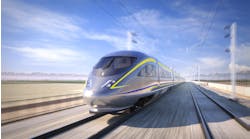Transit agencies routinely face demand for expanded and improved services. Adding new or additional passenger, freight, inter-city and high-speed rail (HSR) service to an existing rail network presents an array of challenges to railroads and state and federal agencies. Most agencies are faced with limited funding for capital improvements, and are constantly looking for ways to address efficiencies prior to beginning design and construction of multi-year projects. Operations analysis and simulation, which is a comprehensive examination of rail operations over a specific set of operating rules and infrastructure, plays an important part in allowing for informed decision-making. Specifically, it determines the ability of track and signal systems—either in place or proposed—to support desired or planned operations along complicated or mixed corridors.
Clearer understanding, better results
To provide agencies and stakeholders with a clear understanding of their operational challenges and potential solutions, and to preclude problems in design and execution, there are several proactive methods of evaluating operations that consultants across the industry implement to help assimilate new services into existing systems. These methods range from signal-system capacity calculations to determine maximum throughput (trains per hour) to full database simulation models that determine impacts of planned or forecasted operations.
For full database simulations, a primary rail simulation analysis tool used in the industry is Berkeley Simulation Software LLC’s Rail Traffic Controller (RTC). RTC can be used for a variety of HSR, freight, light-rail transit (LRT), and heavy rail-based commuter-rail operations. This Windows-based program simulates the movement of trains over rail networks on a specific infrastructure at a detailed and realistic level. This allows planners to analyze specific tasks, including developing operating plans, evaluating capital improvement/investment projects and assessing the impact of adding service to existing operations.
To maximize the benefit of an investment for the rail system or line, existing systems are evaluated through RTC simulation models, and specific infrastructure improvements are then identified that would increase capacity or improve service. These improvements could include additional tracks, switches and crossovers; station platforms; and types of signaling systems, including the effects of positive train control (PTC) on existing operating plans.
RTC simulation models have become valuable tools for studying rail operations planning and infrastructure projects on all levels. A simple RTC model can be built with only track speed and station infrastructure, and equipment characteristics to determine a train’s travel time through a train performance calculation (TPC). TPC is useful in establishing preliminary service plans, developing conflict-resolution stringline charts and identifying where passing sidings or other infrastructure improvements may be needed.
TPCs also are used to verify grade-crossing start locations and approach warning times. For example, working with Princeton University, VHB acted as consultant liaison with New Jersey Transit (NJ Transit) on the Faculty Road Grade Crossing Replacement. NJ Transit’s Princeton Branch Rail Line, which connects the township of Princeton and Princeton University with rail service to New York and Philadelphia via Amtrak’s Northeast Corridor (NEC), intersects at grade with Faculty Road on the Princeton University campus. As part of a major campus expansion, VHB developed train operation, speed and timing information through TPC runs in RTC. Using the NJ Transit electric multiple unit (EMU) train’s acceleration profile, the new and temporary platform locations were tested for traffic pre-emption “clear-out” times. The analysis confirmed that adequate grade-crossing warning time was provided on NJ Transit’s Princeton EMU shuttle. This was critical to the project, because it verified that the existing grade-crossing approaches would not have to be modified to maintain safe and efficient traffic operation at the grade crossing throughout the project. Verifying the crossing approach timings from a temporary platform location was necessary to move the project forward, and the accuracy of the analysis was proven once the temporary and final platforms were placed into service.
The South Station track occupancy chart.
Converting complicated to clear-cut
In addition to operational planning needs, RTC can be used to simulate complex infrastructure networks for rail-based transportation systems. Currently, the Massachusetts Department of Transportation (MassDOT) is expanding Boston’s historic South Station, which is the second busiest transportation center in New England. This project, which will significantly increase South Station’s capacity by adding seven new tracks and four new platforms to the rail station, identified a very unique and complicated track and signal configuration that the RTC software had never before encountered.
VHB worked closely with Berkeley to further develop the program’s logic, adding functionality that enabled RTC to process the complicated sectional releasing in the proposed terminal interlocking. These improvements allowed the group to accurately model the proposed infrastructure, as well as provide realistic and calibrated simulation results.
“The South Station Expansion is a unique project with complex terminal infrastructure,” said MassDOT Project Manager Steve Woelfel. “The simulation models provided by VHB were easy to navigate and understand, and helped us identify solutions to the railroad operations challenges we faced.”
Informed decisions
Development of a rail simulation model can be a lengthy process beyond the initial project funding. Often, agencies and stakeholders seek preliminary answers prior to determining whether a full simulation is warranted or needed. To evaluate operations from a high level without the need for computer simulation, track occupancy charts are developed using a graphical tool created in Excel. Although produced in less time than is needed for full simulations, these charts still provide a clear representation of operations through “Gap Analysis” of a specific area.
Gap Analyses apply line-track occupancy charts that graphically depict which tracks are occupied and unoccupied in five-minute blocks of time over a typical operating day of service. The occupancy chart is visually aligned with charts depicting track, signal system and platform infrastructure, allowing reviewers to easily see operational challenges and opportunities along the corridor, such as gaps in service, rail congestion and available service windows. Gap Analyses provide valuable insight into potential operating scenarios and alternatives without spending valuable time and money to develop full RTC models. This high-level analysis enables agencies and stakeholders to make informed decisions on how to move projects forward.
In addition to using RTC computer simulations as an analytical tool, this graphical software visually demonstrates proposed operations and infrastructure through the use of animations and stringlines. Two-dimensional animation provides a simple visual representation, allowing for an informed discussion about potential conflicts, delays and solutions. Stringlines show the proposed operations in time-distance charts to demonstrate when trains are delayed and where “meet passes” occur. Each of these tools can be programmed to display colors representing information from the simulation, such as train type (railroad, line, etc.). While the animations and stringlines are powerful tools—and very valuable to the operations specialist—to the uninitiated user these outputs represent a lot of complex technical information that is difficult to understand.
By converting all of the resultant statistical information into graphs and charts, computer simulation software outputs are coordinated with service equipment cycles to match the animation, resulting in information that is easier to digest and visualize. This method, as well as the coordination of animation colors with the operating plan materials, enables clear demonstration of operational challenges or efficiencies in an operating plan or from a given piece of infrastructure. With all parties able to more easily understand the complex operations represented, project teams, agencies and stakeholders are engaging in more meaningful meetings and discussions, and providing valuable input and feedback.
The South Station track RTC model.
Concept to construction
RTC simulation models, once built and calibrated, serve as an invaluable tool when evaluating the effects of construction on a system. Construction staging, a key concern for many clients and stakeholders—particularly on busy corridors—often requires proof of how to maintain operations during major construction projects. Computer simulations allow operational users to quickly determine the effects of disabled sections of infrastructure so that new or temporary service plans can be tested through each phase of construction.
The use of operations analysis, from simple capacity calculations to full simulation models, helps transit and rail agencies better understand how to integrate expanded and improved services into existing systems throughout the lifecycle of a project, from concept to completion. Incorporating modeling tools into the planning and design approach has resulted in clearer project understanding, informed decision-making and better results.
---------------
Bendyk is manager of transit and rail operations for VHB.



